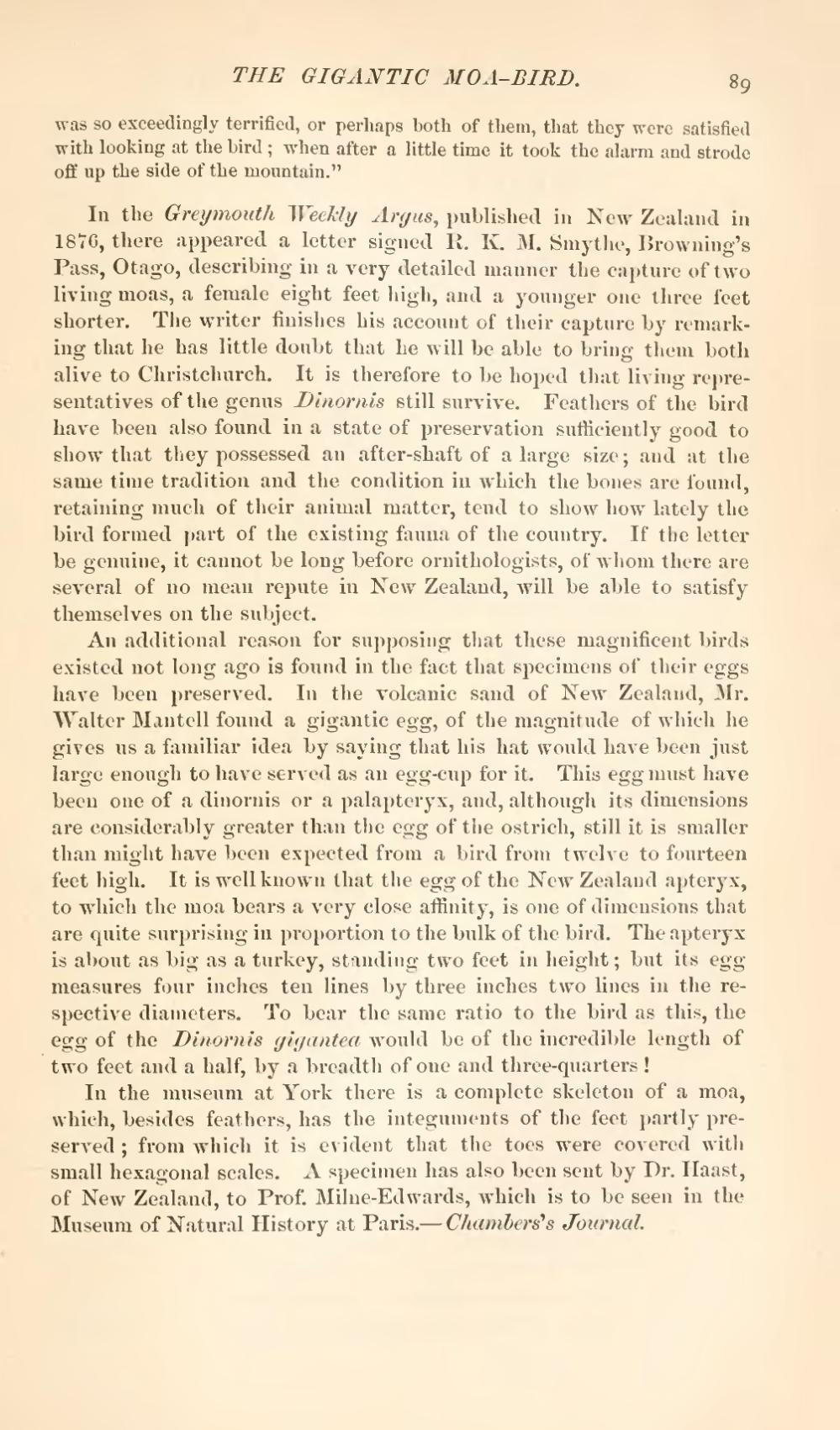In the Greymouth Weekly Argus, published in New Zealand in 1876, there appeared a letter signed R. K. M. Smythe, Browning's Pass, Otago, describing in a very detailed manner the capture of two living moas, a female eight feet high, and a younger one three feet shorter. The writer finishes his account of their capture by remarking that he has little doubt that he will be able to bring them both alive to Christchurch. It is therefore to be hoped that living representatives of the genus Dinornis still survive. Feathers of the bird have been also found in a state of preservation sufficiently good to show that they possessed an after-shaft of a large size; and at the same time tradition and the condition in which the bones are found, retaining much of their animal matter, tend to show how lately the bird formed part of the existing fauna of the country. If the letter be genuine, it cannot be long before ornithologists, of whom there are several of no mean repute in New Zealand, will be able to satisfy themselves on the subject.
An additional reason for supposing that these magnificent birds existed not long ago is found in the fact that specimens of their eggs have been preserved. In the volcanic sand of New Zealand, Mr. Walter Mantell found a gigantic egg, of the magnitude of which he gives us a familiar idea by saying that his hat would have been just large enough to have served as an egg-cup for it. This egg must have been one of a dinornis or a palapteryx, and, although its dimensions are considerably greater than the egg of the ostrich, still it is smaller than might have been expected from a bird from twelve to fourteen feet high. It is well known that the egg of the New Zealand apteryx, to which the moa bears a very close affinity, is one of dimensions that are quite surprising in proportion to the bulk of the bird. The apteryx is about as big as a turkey, standing two feet in height; but its egg-measures four inches ten lines by three inches two lines in the respective diameters. To bear the same ratio to the bird as this, the egg of the Dinornis gigantea would be of the incredible length of two feet and a half, by a breadth of one and three-quarters!
In the museum at York there is a complete skeleton of a moa, which, besides feathers, has the integuments of the feet partly preserved; from which it is evident that the toes were covered with small hexagonal scales. A specimen has also been sent by Dr. Haast, of New Zealand, to Prof. Milne-Edwards, which is to be seen in the Museum of Natural History at Paris.—Chambers's Journal.
